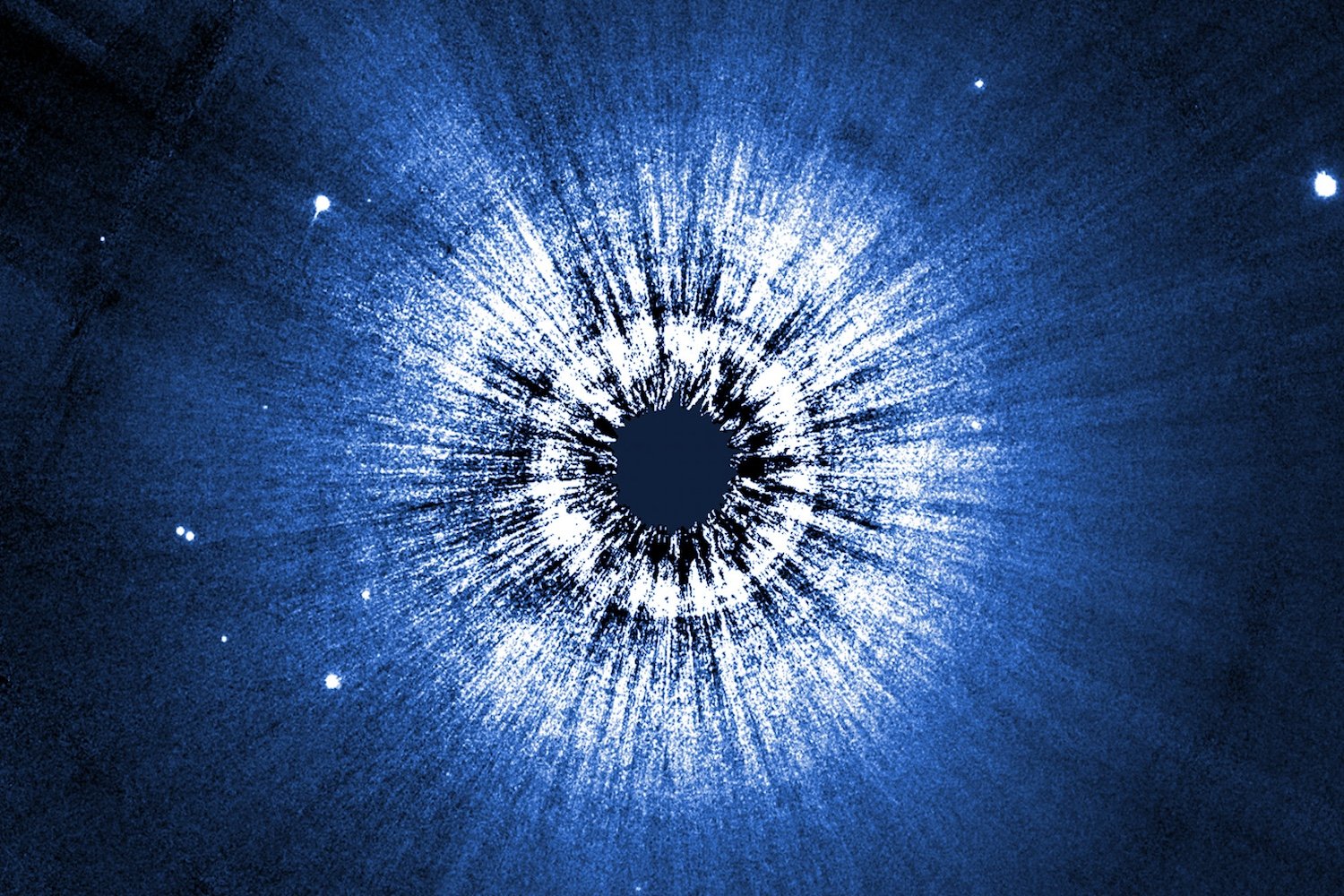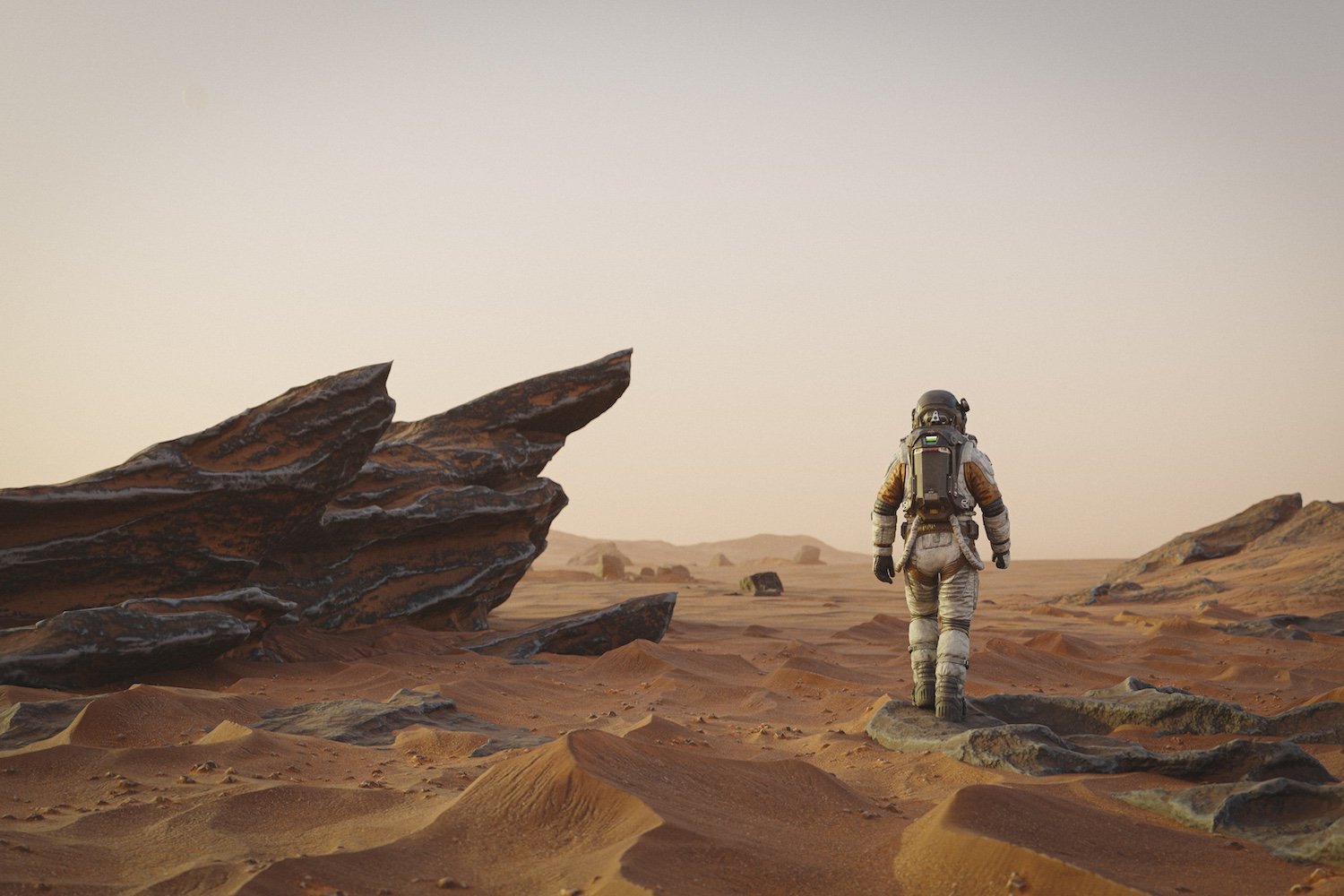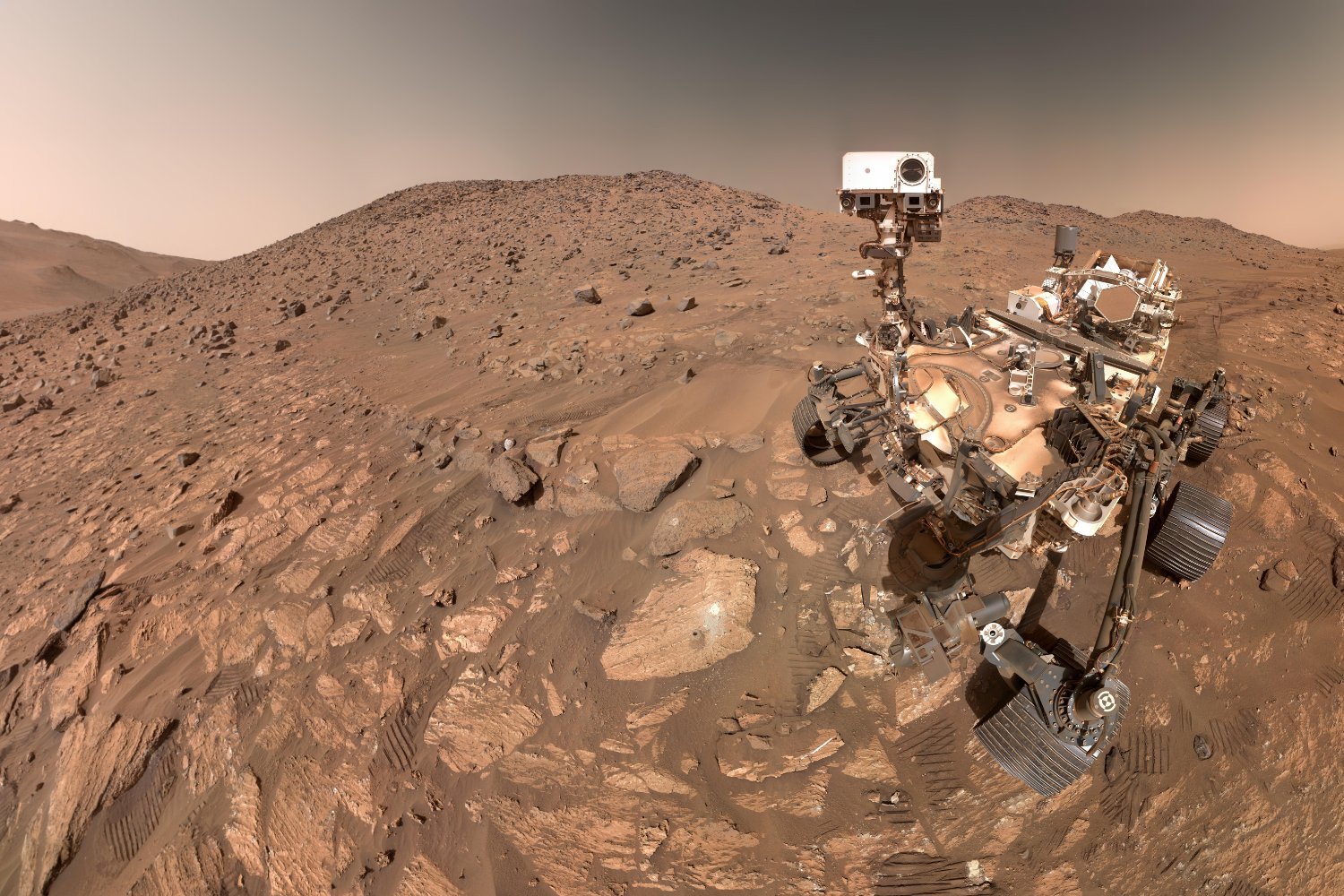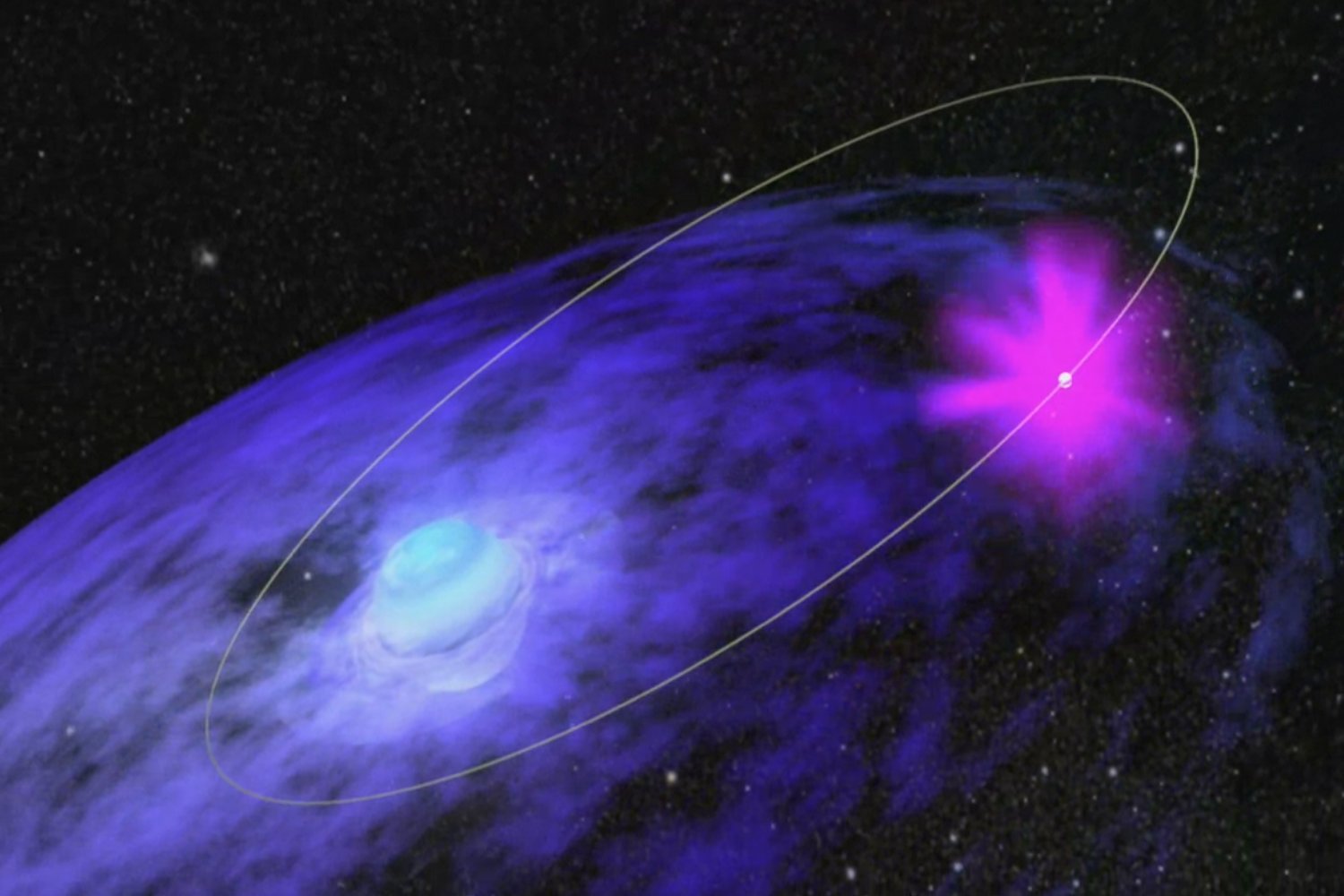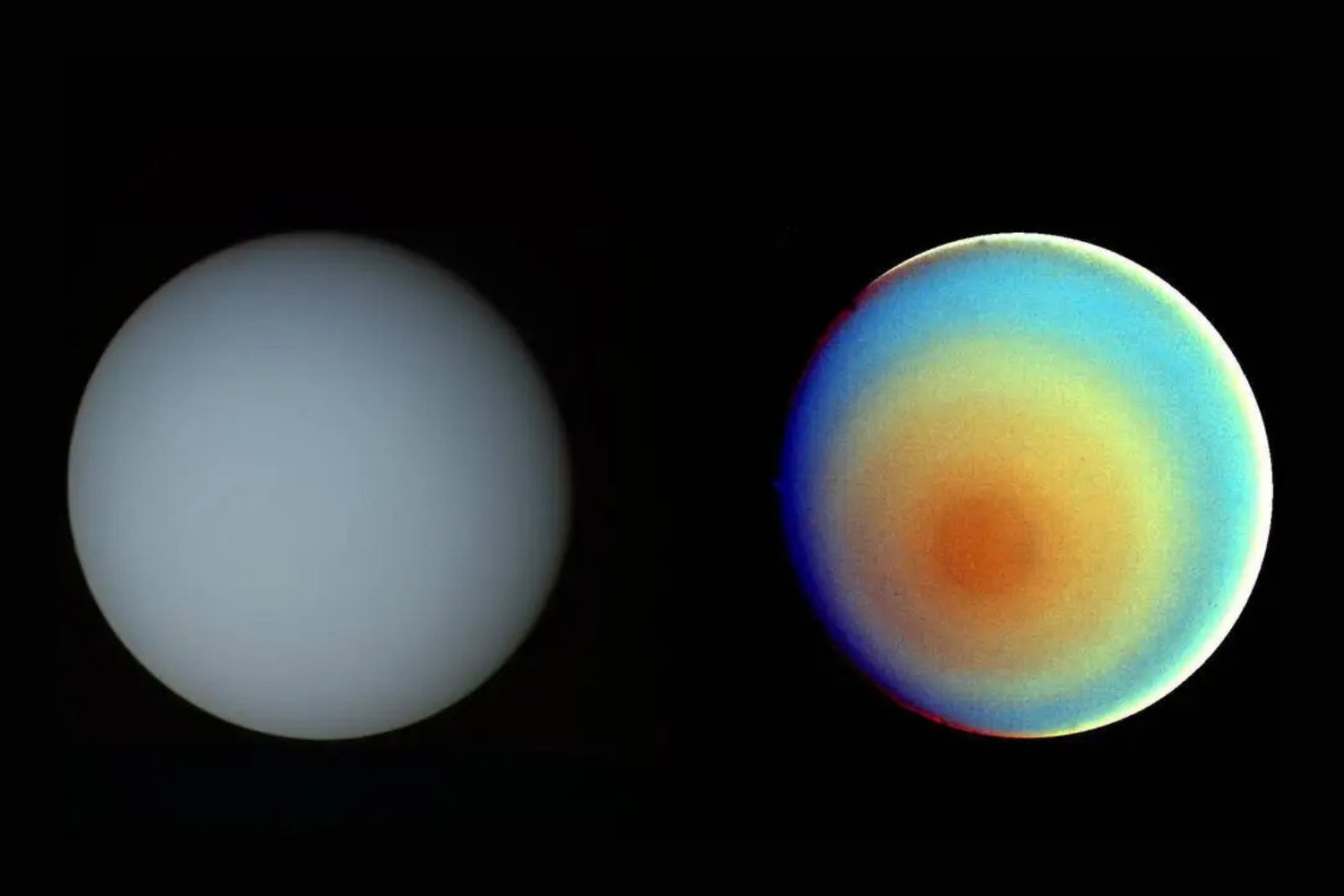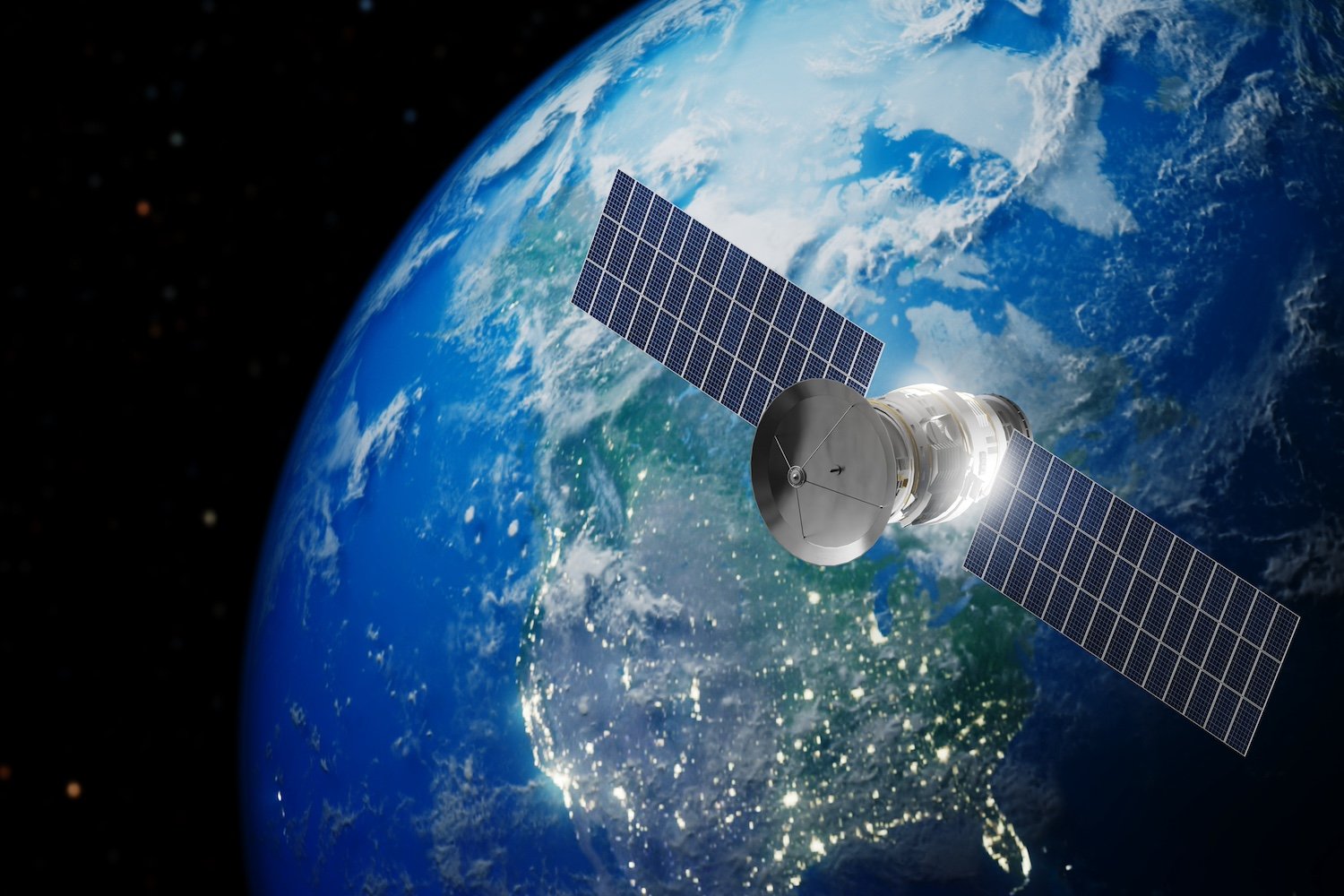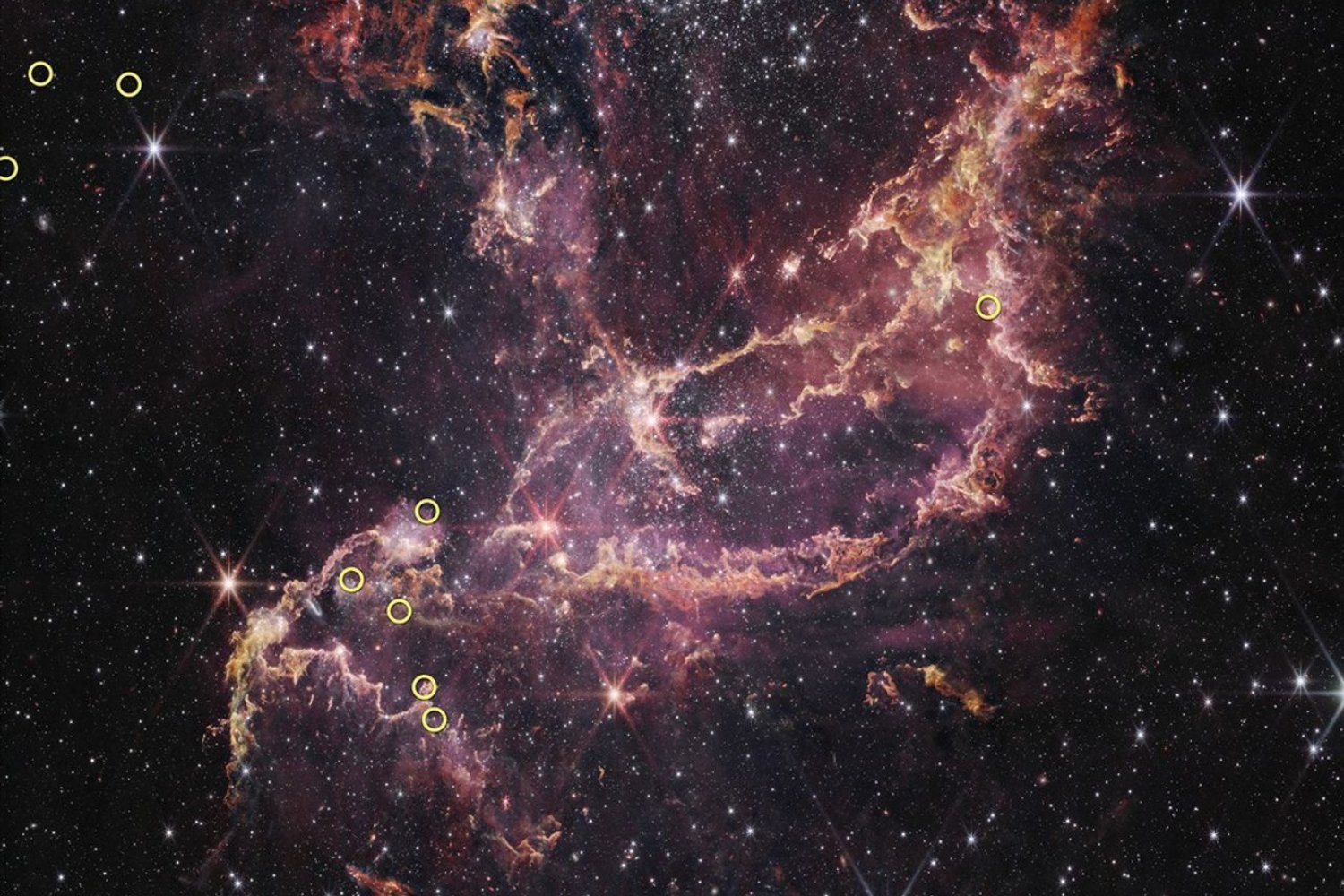Vega, a bright star just 25 light-years away in the Lyra constellation, has intrigued astronomers for decades. In 1984, it became the first star observed with a circumstellar disk, the swirling cloud of gas and dust from which planets are born. New observations using NASA’s Hubble and Webb telescopes have deepened the mystery, revealing a surprisingly smooth disk with no evidence of planets.
This unexpected finding challenges our understanding of planet formation. Vega’s disk, spanning nearly 100 billion miles, shows no signs of the disruptions typically caused by orbiting planets. “The Vega disk is smooth, ridiculously smooth,” says Andras Gáspár, a researcher at the University of Arizona and co-author of two forthcoming papers in The Astrophysical Journal. This smoothness sets Vega apart from other observed circumstellar disks, raising questions about the processes shaping planetary systems.
Vega’s prominent place in the night sky and its early association with planetary formation made it a focal point of astronomical research. Forty years ago, NASA’s Infrared Astronomical Satellite detected excess infrared radiation from warm dust around Vega, the first direct observation of planet-forming material around a star. This discovery fueled scientific interest and even inspired Vega’s portrayal in the 1997 film Contact, where, ironically, no planets were found.
![]() Hubble Webb VegaHubble’s false-color view of the Vega disk (left) shows the outer halo, while Webb (right) resolves the warm dust glow within the disk. Credit: NASA, ESA, CSA, STScI, S. Wolff (University of Arizona), K. Su (University of Arizona), A. Gáspár (University of Arizona)
Hubble Webb VegaHubble’s false-color view of the Vega disk (left) shows the outer halo, while Webb (right) resolves the warm dust glow within the disk. Credit: NASA, ESA, CSA, STScI, S. Wolff (University of Arizona), K. Su (University of Arizona), A. Gáspár (University of Arizona)
Previous observations have contributed to our understanding of Vega’s disk. In 2005, NASA’s Spitzer Space Telescope revealed the disk’s surprising size. Now, the combined power of Hubble and Webb provides unprecedented detail. Webb captures the infrared glow of sand-sized dust particles orbiting the star, which shines 40 times brighter than our Sun. Hubble detects the reflected light from finer, smoke-like particles in the disk’s outer halo.
This difference in particle distribution provides clues about the disk’s dynamics. Different types of physics will locate different-sized particles at different locations,” explains Schuyler Wolff, a researcher at the University of Arizona’s Steward Observatory and lead author of the Hubble study. The observed sorting of dust particles helps astronomers understand the forces at play within the disk. Unlike our solar system, where giant planets like Jupiter and Saturn confine dust, Vega’s disk appears to spread freely.
Stars form from collapsing clouds of gas and dust. The leftover material forms a rotating disk that becomes the birthplace of planets. While Hubble has observed protoplanetary disks with planets carving paths through them, Vega’s disk remains conspicuously empty. This absence challenges existing models of planet formation.
The lack of planets around Vega highlights the diversity of planetary systems. “We’re seeing in detail how much variety there is among circumstellar disks, and how that variety is tied into the underlying planetary systems,” notes Kate Su, a researcher at the University of Arizona and lead author of the Webb study. Even without directly observing planets, these findings offer valuable insights into the planet-formation process and refine our understanding of the complex dynamics shaping planetary systems. The mystery of Vega’s missing planets underscores the ongoing quest to unravel the secrets of planetary birth.



